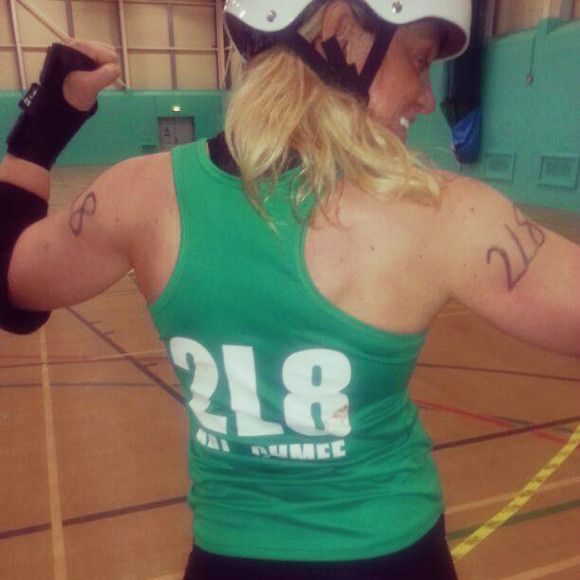OK, so the title is intentionally provocative – but it poses an important question about what we culturally perceive to be ‘revolting’.
In western, contemporary society the thin ‘ideal’ is firmly entrenched into our psyches. It exists in just about every media channel that permeates our every-day lives. Ubiquitous in fashion magazines, TV programmes and social media sites, the often adulterated imagery is pervasive, overwhelming and virtually impossible to ignore. So what of the vast majority of society that fit outside this ‘ideal’?
Recent mass media coverage of the obesity ‘epidemic’ has rapidly gained kudos in public consciousness, cast in the language of panic and contagion it fosters an aberration and disgust for all things considered ‘fat’. We are residing in an environment controlled by the aesthetic which is constantly negotiated through the ‘gaze’ of others, and of ourselves.

We, as a society, have learned throughout the last few decades that our bodies are flawed should they be remotely anything other than ‘ideal’, from both ends of the weight scale. We are measured against blunt, draconian instruments such as the BMI chart (which depict an inaccurate casual relationship between weight and height but do not allow for variables, such as ethnic diversity) and sit amid a constant site of struggle with our corporeality.
It can be said we are at war with our bodies, when perhaps we should be revolting!
As the New Year starts and the vast majority of society steps onto the ‘diet’ treadmill for the umpteenth time, we should ask ourselves why? Everyone knows that diets are dumb. They don’t work. Yet every year we consider what we put in our mouths and how we ‘work’ these foods out of our diets. The diet industry is worth billions and continues to grow, alongside the figures for obesity. So, why are we so concerned with a system that consistently fails? Why are we so obsessed with ‘fat’?
While I don’t deny the escalating obesity figures published by the World Health Organisation are accurate, nor the health concerns associated with them, my concern is how the construction and labelling of people outside the recommended scale denigrates a large percentage of society, designating fit and healthy individuals as ‘abnormal’ and therefore subject to change. There is a false parity of esteem that equates the ‘thin’ with the fit, alongside the’ fat’ and the unfit.
These stigmatizing conditions within which we live fail to ignite an impetus for change (as expected) but rather incite feelings of guilt, shame and self-hatred for perfectly healthy human beings. We now live in a highly pedagogized society which requires us to constantly monitor and evaluate our bodily aesthetics, while we perpetually question how we look, rather than what we can achieve with our amazing bodies.
While I am not a fat activist, nor a thin ‘idealist’, I am a staunch advocate of the ‘Health at Every Size’ (HAES) movement which lends a more considered focus to fitness over size. The ‘size sighs’ which are often quoted within this rhetoric promulgate the unfair and often inaccurate reflections of the ‘unideal’ individual which proliferate in our largely mediatized culture. What is required, then, is a paradigmatic shift from shape and weight to fitness; a focus which replaces the glare of the superficial, supercilious eye with a positive and healthy approach to wellness – and this is where we introduce roller derby.
It would be fallacy (and highly ambitious) to proclaim roller derby as a panacea for all body related issues in the sports domain – but it’s a start. It presents a non-judgemental platform in a sea of hostility which purports people on the margins of an absurdly restrictive scale of weight as lazy and undisciplined.

Instead, roller derby fosters an environment where the focus shifts from fashion to function and from ‘pretty’ to performance. In roller derby, the body is celebrated for what it can achieve, not what it looks like. Every body type has a place in derby and each has its advantages, and disadvantages. In this domain, it is up to the individual, not society, to decide what they do with their body, and for what purpose.
What I can proclaim is that when you are in it, you want to achieve more. The impetus to improve your fitness is contingent on your desire to perform better, to achieve more for yourself and your team – not by means of a misguided obligation in the name of ‘good’ citizenship, or to feel accepted within the realms of the beauty ‘ideal’. Roller derby is more than a sport. It is an accepting and supportive community that organically promotes fitness as a consequence of desire, not guilt – what was ever achieved through that?
In a world where subsequent generations are becoming more and more aware of their bodies and how they might not ‘fit’, where levels of eating disorders are alarmingly high and intensifying, we need to promote activities such as roller derby that actively facilitate this shift: for we are all subject to these damaging influences embedded within our society.
So, while I frustratingly continue to battle with my body, as so many others do, I will endeavour to counteract the overpowering impressions of our culture, on the track , and I will be revolting!
I will Roller Derby Til I Diet! Will you?
Kat Chmee
For more information on the HAES movement: http://www.healthateverysize.org.uk/
Le Besco, K ( 2004) Revolting Bodies – The Struggle to Redfine Fat Identity.
